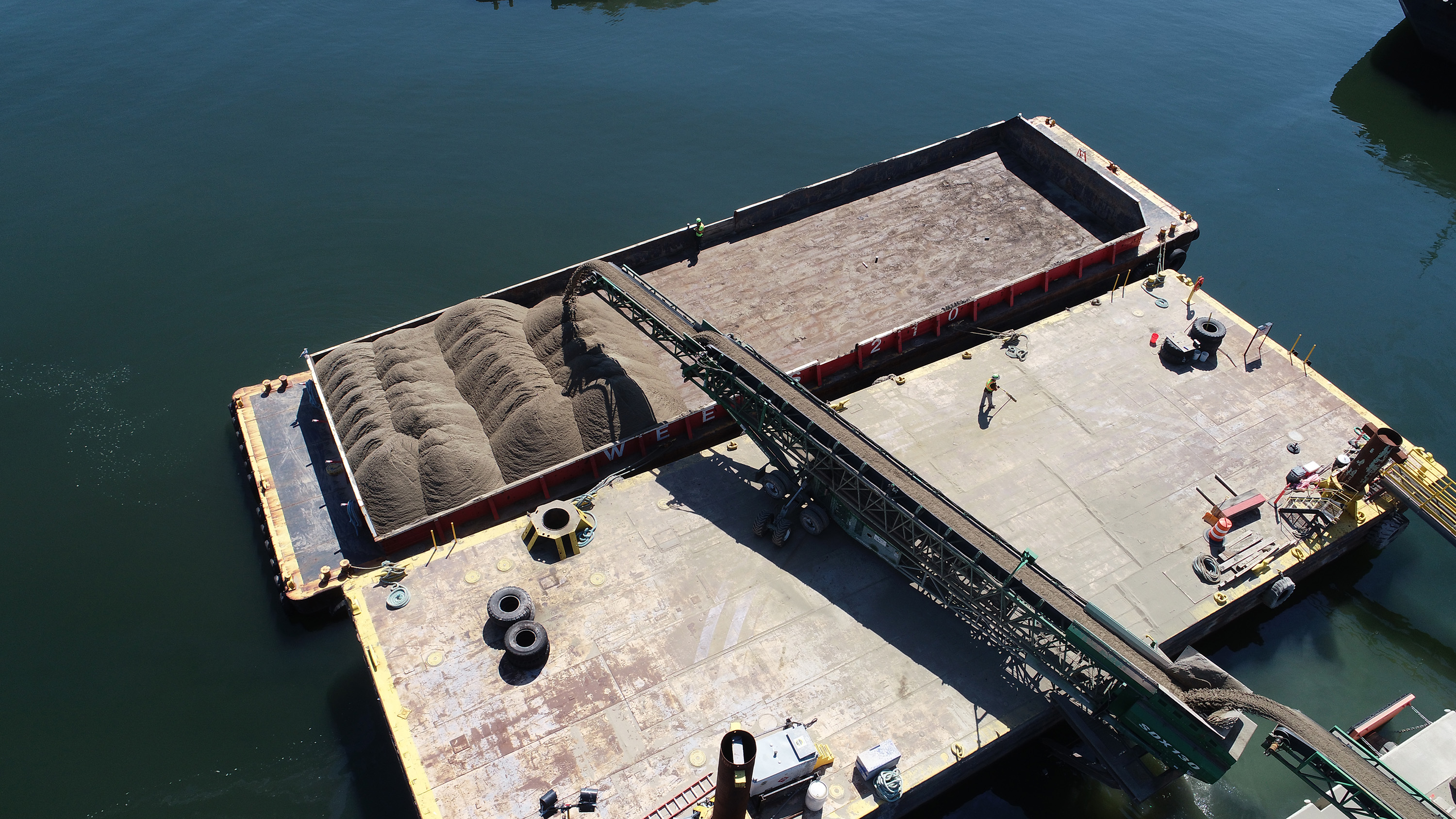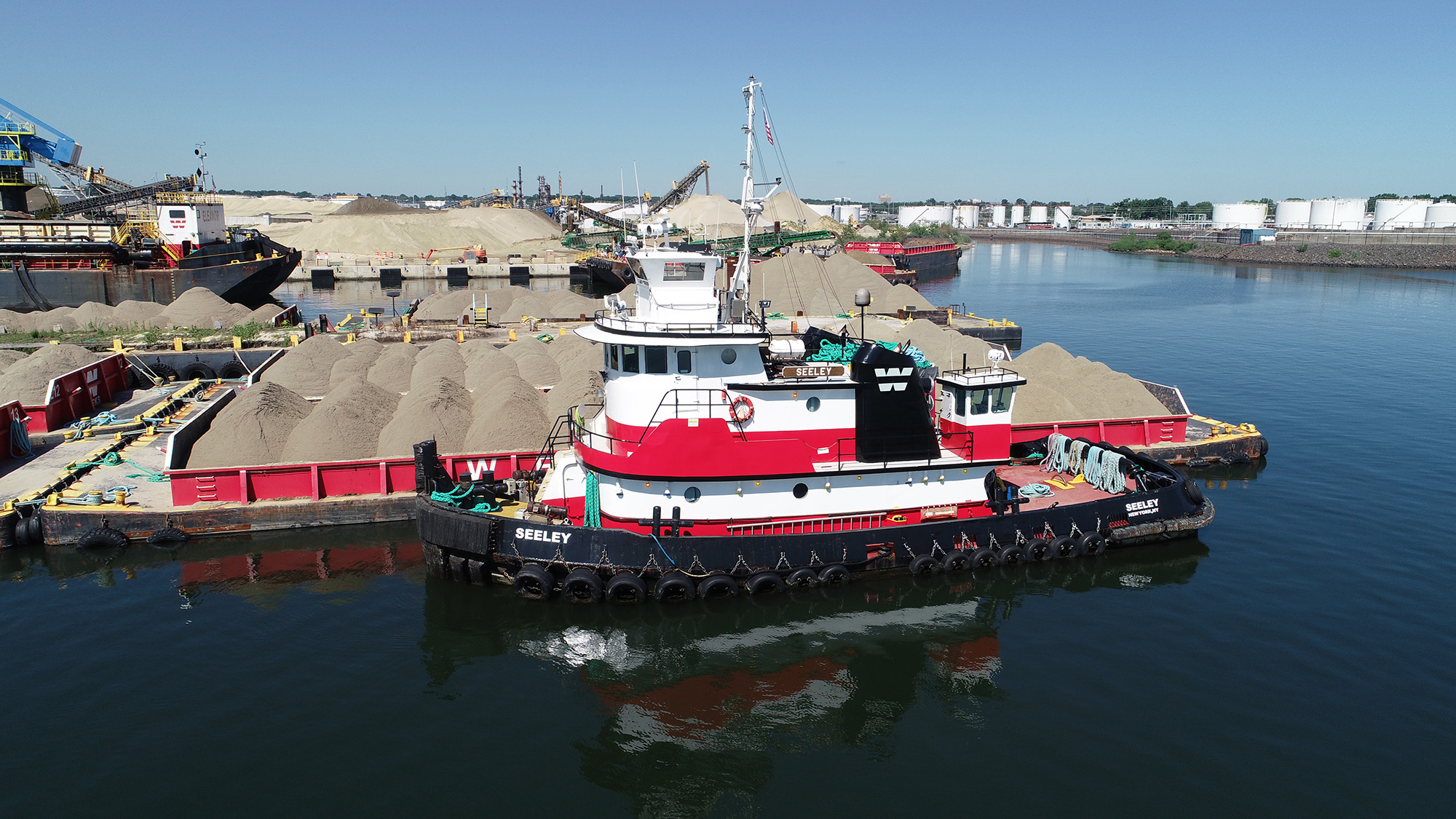Reducing Truck Traffic and Emissions by Using Barges and Tugboats

Updated, five-year data sets of a study comparing domestic freight transportation effects on the general public confirmed that using barges to transport goods generates far fewer emissions than rail or truck per-million-ton-miles. These data underscore that inland waterways are ideal for companies like Weeks Marine to move equipment and products to help reduce truck traffic and have a better overall impact on our environment.
The study found that using barges, 15.6 tons of carbon dioxide (CO2) are emitted, while railroads emit 30 percent (21.2 tons) and trucks emit a whopping 1,000 percent (154.2) more than barges.
Barge transportation is something Weeks Marine has perfected. Our vast fleet of barges ranging in size and capacity combined with our growing fleet of tugboats also ranging in size, we are uniquely positioned to help our clients move equipment and products anywhere in the world.
Weeks Marine’s Marine Services division frequently partners with North American Aggregates (NAA), a wholly owned subsidiary of Weeks Marine, Inc., and a leading supplier of aggregates for the construction, infrastructure, transportation and redevelopment of industries in the New York, New Jersey and Connecticut tri-state area. Many clients take advantage of Weeks’ ability to deliver aggregate to various jobsites via inland waterways like the Hudson River.
“Anytime we can use Weeks Marine’s expansive fleet of tugs and barges to move aggregate from our Perth Amboy facility for client deliveries, we recommend it,” said Jason Marchioni, Vice President of NAA. “Barges can hold significantly more aggregate than a truck can and we can often send multiple barges with just one tugboat from our facility to the client – it’s more efficient and significantly reduces carbon emissions and environmental impact.”

Weeks Marine’s tugboat Seeley with barges full of sand at NAA
A typical Weeks Marine barge used by NAA can hold about 1,500 tons of aggregate while a typical dump truck holds just 25 tons. For comparison, that’s 60 trucks versus just one barge.
A Focus on Sustainability
Delivering so much sand to the tri-state area is possible thanks to NAA and Weeks Marine’s sustainable approach to mining virgin source aggregates. NAA is permitted by both the New Jersey Department of Environmental Protection and United Sates Army Corps of Engineers to mine sand from the Ambrose Federal Navigation Channel – a naturally replenishing source in the lower New York Bay.
The company takes special care to avoid erosion and destruction of habitat caused by traditional sand mining, while ensuring that the Ambrose Channel remains navigable without relying on government funding for maintenance.
Not only is the mining process sustainable, but the new, state-of-the-art Perth Amboy facility runs completely on electricity versus traditional plants which often use diesel fuel.
In 2020, NAA modernized its fleet of equipment and installed two fully electric equilibrium cranes (E-cranes) that significantly increase the amount of material that can be handled and is more energy efficient and cleaner than its diesel-powered predecessors.
“By using two E-cranes, we can unload our dredge full of mined sand in about five hours,” said Marchioni. “Not only is it more efficient, but it’s much more environmentally friendly. We are always looking for ways to reduce our emissions and carbon footprint and these cranes have been a big help in doing just that.”
To learn more about Weeks Marine’s fleet of tugs and barges, click here. To learn more about NAA, click here.



